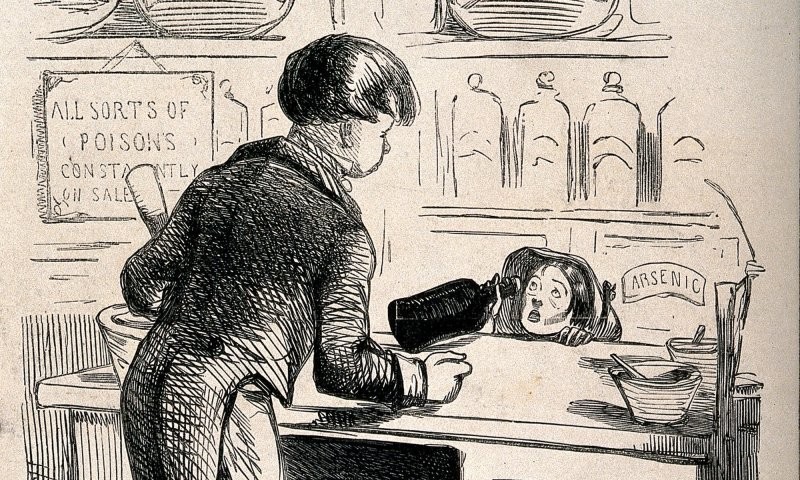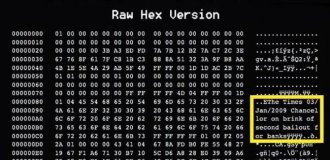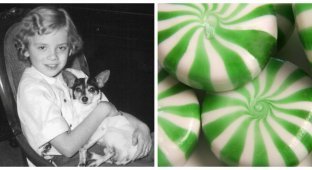Human sloppiness, deadly candies and the beneficial consequences of negligence (7 photos)
Sweets are an integral part of any holiday. But they can become the cause not of joy, but of tragedy. 
On October 30, 1858, William Hardaker set up his sweet stall at the Green Market in Bradford, England. That day, factory workers lined up to buy his striped candy, a traditional type of candy typically flavored with peppermint. Hardaker lured customers with reduced prices: a discount to compensate for the slight color change in the last batch. By the time the market closed, Hardaker had sold more than two kilograms of sweets. And the next morning, two local children, eight and eleven years old, died. 
Bradford
This was a time when infant mortality was high. Cholera was rampant, so police initially declared their deaths to be of natural causes. However, by the evening of 31 October the Bradford Observer reported a growing number of sudden deaths.
Police responded to a terrifying call at 30 Jowett Street. Two brothers, two and five years old, died. Their distraught father, Mark Burran, suggested the mint lozenges he bought could be to blame for the children's deaths. His suspicions were confirmed when the visiting guy insisted on trying the candy himself. He ate two and immediately fell ill.
Burran told police that the candy stand was located at Green Market. Meanwhile, doctors across Bradford tried to treat dozens of sick and dying people. 
Traditional English lollipops Humbugs
In Victorian England it didn't take much imagination to suspect poisoning. Many things were poisonous. At that time, arsenic was often present in wallpaper, dress fabric, and even sprayed as a household cleaner.
Just a year before the Bradford deaths, Madeleine Smith, a young woman from Glasgow, was accused of murdering her lover with arsenic. Smith was acquitted, but the trial became a media sensation. Arsenic was easy to buy, tasteless and odorless, and its effects after ingestion could often be attributed to illness. True, if the amount of arsenic was moderate, and not as horrifyingly large as was later discovered in the victims.
If the police considered Hardaker the organizer of the murders, they soon dismissed this version as unfounded. The seller was found at home writhing in agony. The night before, the man tried one lollipop. 
Arsenic
The sick stall keeper first pointed to Joseph Neal, a wholesale confectionery dealer, who sold him the deadly lozenges. Neil's candy recipe included a mixture of sugar, water, peppermint oil and daft, a type of plasticizer that was added to food for the poor to replace some of the sugar and reduce the cost of production. Adding solids to food was common and legal at the time. However, sweets were especially susceptible to adulteration due to the high cost of sugar.
About two weeks before the tragedy, Neil sent his employee to buy 5 kilograms of dafta from a chemist in nearby Shipley. Arriving at the scene, Neal's assistant discovered that the pharmacist, Charles Hodgson, was ill and lying in bed. Instead, an inexperienced journeyman, William Goddard, worked in the store.
However, Neil's employee did not want to leave empty-handed. Reluctantly, Hodgson showed Goddard where to find the daft and directed him to a large container in the corner of the store. Goddard obediently scooped a large amount of white powder from an unlabeled container to hand to Neal's assistant. But he chose the wrong container. Instead of a harmless additive, Goddard sold arsenic to Neal's assistant.
The assistant took the package of arsenic to James Appleton, a candy maker who also worked for Neal. Appleton added everything to the candy mixes. Later, after he finished the candy, Appleton began vomiting, likely from exposure to massive amounts of arsenic. At the time, he simply assumed he had caught the stomach flu. The court later found that each candy contained enough poison to kill an adult.
Officers spent the rest of the day driving around the area trying to warn as many people as possible about the danger. As the Bradford Observer reported, "the tranquil slumber of countless people was broken at midnight by a warning... the walls of the city were thickly covered with the official warning of the Chief Constable." It has probably saved countless lives. However, it came too late for the 7 adults and 13 children who died, and for hundreds of seriously ill people. The youngest child was only 17 months old.
After tracing how the arsenic ended up in the candy, the police decided that poor Goddard, with his three weeks of experience working in a pharmacy, should be arrested for the deaths.
As a result, Goddard, his employer Hodgson and candy wholesaler Neal were charged with manslaughter. Surprisingly, all three were acquitted in December of that year because the prosecution could not prove that any law had been broken. Hardaker returned to selling confectionery at the Green Market, recovering from eating one of the candies himself. 
Even a child could buy poison
The horrific mass poisoning was the starting point for the 1868 Act. According to this law, said poisons could only be sold in special colored glass bottles with a texture to visually identify the contents. Specific poisons also had to be labeled, and stores had to keep logs that recorded the names of customers.
However, even after the new laws were passed, arsenic could still be purchased for household use. Vast quantities of consumer products containing toxins continued to be sold. Under the Pharmacy Act, they were labeled as poisonous but then sold to consumers as harmless. 
In addition, candy continued to cause harm to health until the 20th century. In August 1955, almost a century after the Bradford poisoning, a dry cleaner died in Sunderland. The client left throat lozenges in his coat pocket. Once in the cleaning product, the candies exploded.
While poisonous candy seems far away and unreal, scandals involving food and drugs continue to this day. Too often, such tragedies occur due to negligence, cost savings and lack of regulation, as was the case with Bradford Lollipops in 1858. People attribute the tragedy to the narrow thinking of representatives of a bygone era. But many similar problems continue to arise today.
























